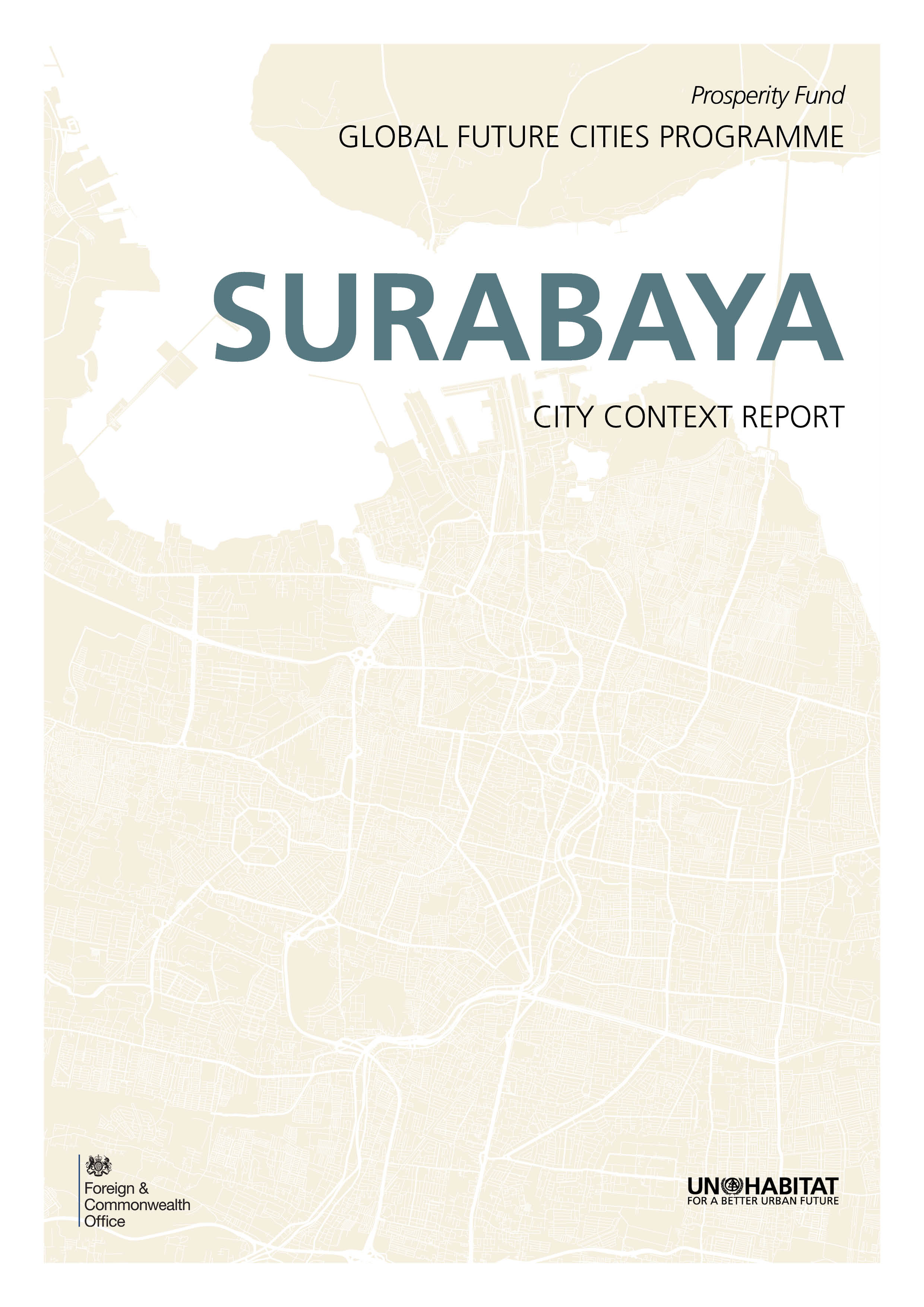Overview
The city of Surabaya, capital of East Java Province, is the second-largest city of Indonesia following Jakarta, the national capital. Surabaya is located at the mouth of the River Mas facing the Madura Island. Surabaya has an annual population growth rate of 0.65 per cent and a population of approximately 3.09 million people in 2018. The city has a population density of 8,458 person per km2 and is highly urbanized. The city’s borders encapsulate an area of 350 km2, divided into 31 districts (kecamatan) and 154 sub-districts (kelurahan). Surabaya is located on the northern coast of Java, in a strategic location whereby it is a key connector for domestic and international air, water and land transportation networks. Served by Asia’s busiest and largest seaport, Perak Port, Surabaya is an important international gateway to East Java for transporting passengers and goods.
Similar to other cities in Indonesia, Surabaya lacks some necessary urban infrastructure, particularly in areas that are prone to environmental risks such as flooding. In the effort to provide its citizens with less risky living conditions, the government of Indonesia aims to create a plan to improve the Surabaya metropolitan urban environment. Between 2002 and 2004, the city of Surabaya experienced a surge in economic development; the economy alone grew by approximately 5 per cent in 2004. This was largely due to increases in domestic investment of approximately 2 per cent and foreign investment by as much as 33 per cent. The level of investment increased during this time period due to the greater number of investment permits and licenses issued. Surabaya’s economic growth is largely in the service sector, which contributes 54 per cent to the regional economy, transportation and communication (9 per cent), and banking and other financial services (6 per cent). Surabaya has a number of guiding spatial and development plans. The Surabaya Development Plan 2010-2014 (RPJMD), renewed every five years, is the city’s urban development plan that addresses several issues related to spatial planning and the development of clean water systems, utilities and the city’s transportation system.
Highlighted Publication

Surabaya City Context Report
Download Document
Challenges
Projects
1 Urban Transformation Plan for Putat Jaya
View DetailsThe project area is the neighborhood of Putat Jaya, which is located as a part of Dolly area. Dolly area was regarded as having the highest concentration of prostitution in the Southeast Asian region prior to the government’s clamping down on area prostitution in 2014. The government’s decision to close down the prostitution industry was primarily due to its contribution towards a negative image of Surabaya.
The purpose of this intervention is to transform Putat Jaya into a liveable vibrant neighbourhood and to promote economic growth through urban planning and community engagement process. This intervention is aligned with Sustainable Development Goals which aim to balance the three (e.g., economic, social, and environmental) dimensions of sustainable development.
The design standards and guidelines aim to provide a clear, comprehensive “road map” to guide future development, such as designing and constructing streets, pedestrian connections, buildings, and outdoor spaces that are consistent with the adopted socioeconomic vision for Putat Jaya.
Project Timeline
-
Charrette
August 2018 -
Validation Workshop
November 2018 -
MoU signing
-
Kick-off Meetings
-
SDG Project Assessment Tool Tailoring Workshop
February 2020
2 Earthquake Preparedness Strategy for Surabaya
View DetailsOfficial studies found that Surabaya has a greater risk for a large-scale earthquake of a 6.5 magnitude due to the presence of the two faults. In response to the potential earthquakes, the city government conducted studies relevant to earthquakes, launched an earthquake awareness campaign and built urban forests and parks to mitigate risk of earthquakes. However, the lack of a resilience plan focused on earthquakes remains a serious and urgent issues.
The purpose of this intervention is to support the Surabaya city government and the relevant stakeholders in transforming the city into a safer place to live for the citizens, including for the low and middle-income communities. This purpose will be accomplished by improving the government’s resilience capacity in responding to potential earthquake shocks immediately, and thus creating a more sustainable disaster mitigation plan.
Project Timeline
-
Charrette
August 2018 -
Validation Workshop
November 2018 -
MoU signing
-
Kick-off Meetings
-
SDG Project Assessment Tool Tailoring Workshop
February 2020
